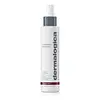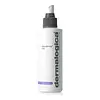What's inside
What's inside
 Key Ingredients
Key Ingredients

 Benefits
Benefits

 Concerns
Concerns

No concerns
 Ingredients Side-by-side
Ingredients Side-by-side

Water
Skin ConditioningButylene Glycol
HumectantPEG-40
HumectantHydrogenated Castor Oil
EmollientArginine/Lysine Polypeptide
Skin ConditioningAloe Barbadensis Leaf Juice
Skin ConditioningSodium Lactate
BufferingSodium PCA
HumectantSorbitol
HumectantProline
Skin ConditioningDipotassium Glycyrrhizate
HumectantMethyl Gluceth-20
HumectantCamellia Sinensis Leaf Extract
AntimicrobialSodium Carboxymethyl Beta-Glucan
CleansingLecithin
EmollientMagnesium Ascorbyl Phosphate
AntioxidantTocopherol
AntioxidantPalmitoyl Tripeptide-5
Skin ConditioningBambusa Vulgaris Leaf/Stem Extract
HumectantRose Flower Oil
MaskingPisum Sativum Extract
Skin ConditioningCupressus Sempervirens Leaf Oil
MaskingCymbopogon Martini Oil
MaskingGlucosamine Hcl
Cymbopogon Schoenanthus Oil
MaskingGlycerin
HumectantEucalyptus Globulus Leaf Oil
PerfumingDisodium EDTA
Caprylic/Capric Triglyceride
MaskingCitrus Limon Peel Extract
EmollientHelianthus Annuus Seed Oil
EmollientRosa Damascena Flower Oil
MaskingEugenia Caryophyllus Flower Oil
MaskingAniba Rosodora Wood Oil
AstringentCitrus Limon Peel Oil
MaskingPelargonium Graveolens Flower Oil
MaskingCitronellol
PerfumingEugenol
PerfumingGeraniol
PerfumingLimonene
PerfumingLinalool
PerfumingBenzyl PCA
HumectantPhenoxyethanol
PreservativeWater, Butylene Glycol, PEG-40, Hydrogenated Castor Oil, Arginine/Lysine Polypeptide, Aloe Barbadensis Leaf Juice, Sodium Lactate, Sodium PCA, Sorbitol, Proline, Dipotassium Glycyrrhizate, Methyl Gluceth-20, Camellia Sinensis Leaf Extract, Sodium Carboxymethyl Beta-Glucan, Lecithin, Magnesium Ascorbyl Phosphate, Tocopherol, Palmitoyl Tripeptide-5, Bambusa Vulgaris Leaf/Stem Extract, Rose Flower Oil, Pisum Sativum Extract, Cupressus Sempervirens Leaf Oil, Cymbopogon Martini Oil, Glucosamine Hcl, Cymbopogon Schoenanthus Oil, Glycerin, Eucalyptus Globulus Leaf Oil, Disodium EDTA, Caprylic/Capric Triglyceride, Citrus Limon Peel Extract, Helianthus Annuus Seed Oil, Rosa Damascena Flower Oil, Eugenia Caryophyllus Flower Oil, Aniba Rosodora Wood Oil, Citrus Limon Peel Oil, Pelargonium Graveolens Flower Oil, Citronellol, Eugenol, Geraniol, Limonene, Linalool, Benzyl PCA, Phenoxyethanol
 Reviews
Reviews

Ingredients Explained
These ingredients are found in both products.
Ingredients higher up in an ingredient list are typically present in a larger amount.
Aloe Barbadensis Leaf Juice comes from leaves of the aloe plant. Aloe Barbadensis Leaf Juice is best known for helping to soothe sunburns. It is also anti-inflammatory, moisturizing, antiseptic, and can help heal wounds.
Aloe is packed with good stuff including Vitamins A, C, and E. These vitamins are antioxidants, which help fight free-radicals and the damage they may cause. Free-radicals are molecules that may damage your skin cells, such as pollution.
Aloe Barbadensis Leaf Juice also contains sugars. These sugars come in the form of monosaccharides and polysaccharides, folic acid, and choline. These sugars are able to help bind moisture to skin.
It also contains minerals such as calcium, 12 anthraquinones, fatty acids, amino acids, and Vitamin B12.
Learn more about Aloe Barbadensis Leaf JuiceButylene Glycol (or BG) is used within cosmetic products for a few different reasons:
Overall, Butylene Glycol is a safe and well-rounded ingredient that works well with other ingredients.
Though this ingredient works well with most skin types, some people with sensitive skin may experience a reaction such as allergic rashes, closed comedones, or itchiness.
Learn more about Butylene GlycolGlycerin is already naturally found in your skin. It helps moisturize and protect your skin.
A study from 2016 found glycerin to be more effective as a humectant than AHAs and hyaluronic acid.
As a humectant, it helps the skin stay hydrated by pulling moisture to your skin. The low molecular weight of glycerin allows it to pull moisture into the deeper layers of your skin.
Hydrated skin improves your skin barrier; Your skin barrier helps protect against irritants and bacteria.
Glycerin has also been found to have antimicrobial and antiviral properties. Due to these properties, glycerin is often used in wound and burn treatments.
In cosmetics, glycerin is usually derived from plants such as soybean or palm. However, it can also be sourced from animals, such as tallow or animal fat.
This ingredient is organic, colorless, odorless, and non-toxic.
Glycerin is the name for this ingredient in American English. British English uses Glycerol/Glycerine.
Learn more about GlycerinWater. It's the most common cosmetic ingredient of all. You'll usually see it at the top of ingredient lists, meaning that it makes up the largest part of the product.
So why is it so popular? Water most often acts as a solvent - this means that it helps dissolve other ingredients into the formulation.
You'll also recognize water as that liquid we all need to stay alive. If you see this, drink a glass of water. Stay hydrated!
Learn more about Water